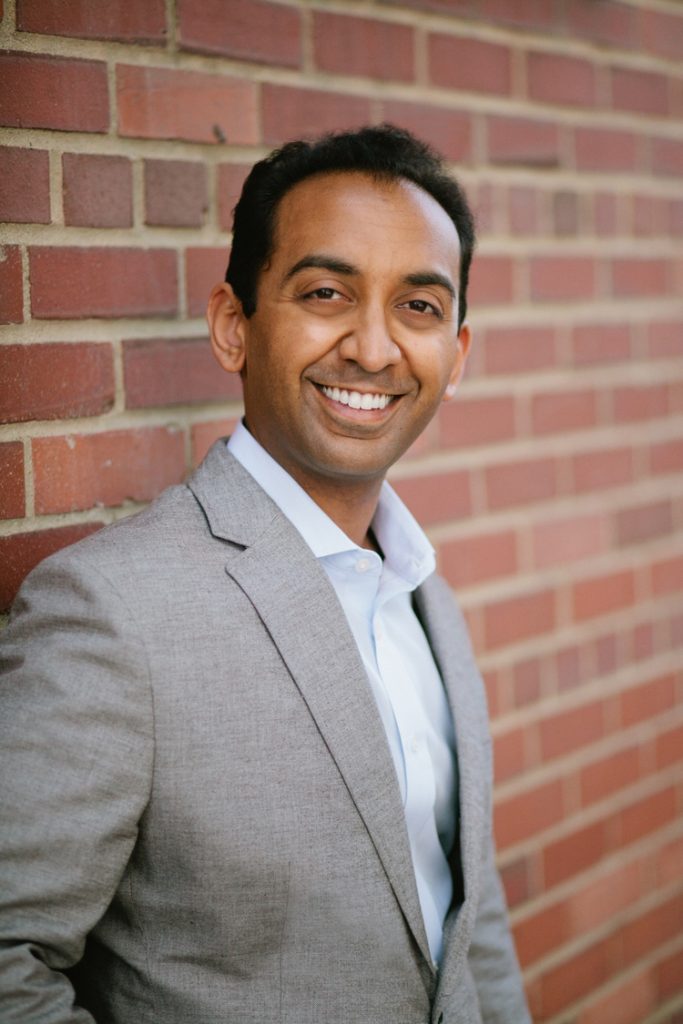Sameer Patel Leads La Jolla Symphony on a Modernist Field Day
Sameer Patel, Associate Conductor of the San Diego Symphony, led the La Jolla Symphony this past weekend in a stirring program of 20th-century modernist monuments and a 2016 work by the American composer Hannah Lash. On paper, his menu of Schoenberg, Stravinsky, Takemitsu, Messaien, and Lash looked like “eat your spinach” fare to the max. In UC San Diego’s Mandeville Hall Sunday afternoon (May 6), Olivier Messaien’s smiling orchestral study “Un sourire” and Toru Takemitsu’s gossamer “A Flock Descends into the Pentagonal Garden” moved the gustatory analogy closer to spinach soufflé.
Wisely starting with Schoenberg’s atonal Five Pieces for Orchestra, Op.16, from 1909 made everything else on the program sound approachable by comparison. Even after 100 years, Schoenberg’s Op. 16 has not mellowed one iota—it remains that opaque, hard-edged abstraction of nubby themes and startling explosions. Patel and the orchestra etched those astringent themes with unflinching clarity, and Patel’s demand for rhythmic precision revealed the work’s essential beauty—as long as you cultivate a liberal definition of beauty.Moments of more conventional beauty abounded in Messiaen’s “Un sourire,” a sea of gentle, slowly changing, hushed progressions from contrasting choirs within the orchestra interrupted by ecstatic eruptions of birdsong portrayed by fleet percussionists. A late work that was premiered only a year before the French composer’s death in 1992, “Un sourire” distills so much of Messaien’s vision into a relatively short but rewarding piece. Takemitsu also features an active percussion section and two prominent harps in his “A Flock Descends,” which marvelously balances stasis and drive in a glittering sonority that frequently suggests the Javanese gamelan.
A dashing, extroverted single-movement piece for large orchestra, Hannah Lash’s “Eating Flowers” brought to mind the cherished virtuoso Concerto for Orchestra genre that proved popular in the mid-20th Century: an abundance of vivid solo opportunities for individual voices as well as for choirs within the orchestra. Lash favored the trumpets with generous opportunities to cry above the orchestral rumble, and Co-Principal Trumpet Rachel Allen handled her assignments with panache. A member of the music faculty at Yale who teaches composition, Lash displays laudable ease engaging the entire orchestra in her fresh musical invention. I will not be surprised to encounter more of her works for orchestra in the future.
Igor Stravinsky’s Symphony in Three Movements, written in 1945, will never be one of the pieces people immediately associate with the great lion of 20th-century composers. His “Rite of Spring” and the other ballets, his cocky “Soldier’s Tale” and his glorious choral-orchestral opus Symphony of Psalms will always be his signature works. But the Symphony in Three Movements is worth a second glance from time to time—a vaguely neoclassical structure bursting with Expressionist grit.
Patel kept the orchestra tightly focused in this rich, overwritten score, and the final movement, the insistent Con moto, can across with impressive urgency.
This concert at UC San Diego’s Mandeville Auditorium was presented by the La Jolla Symphony and Chorus on May 5 & 6, 2018. The May 6 performance was reviewed. This organization’s final concert of the 2017-18 season will be given June 9 & 10, 2018, in the same venue under Music Director Steven Schick.

